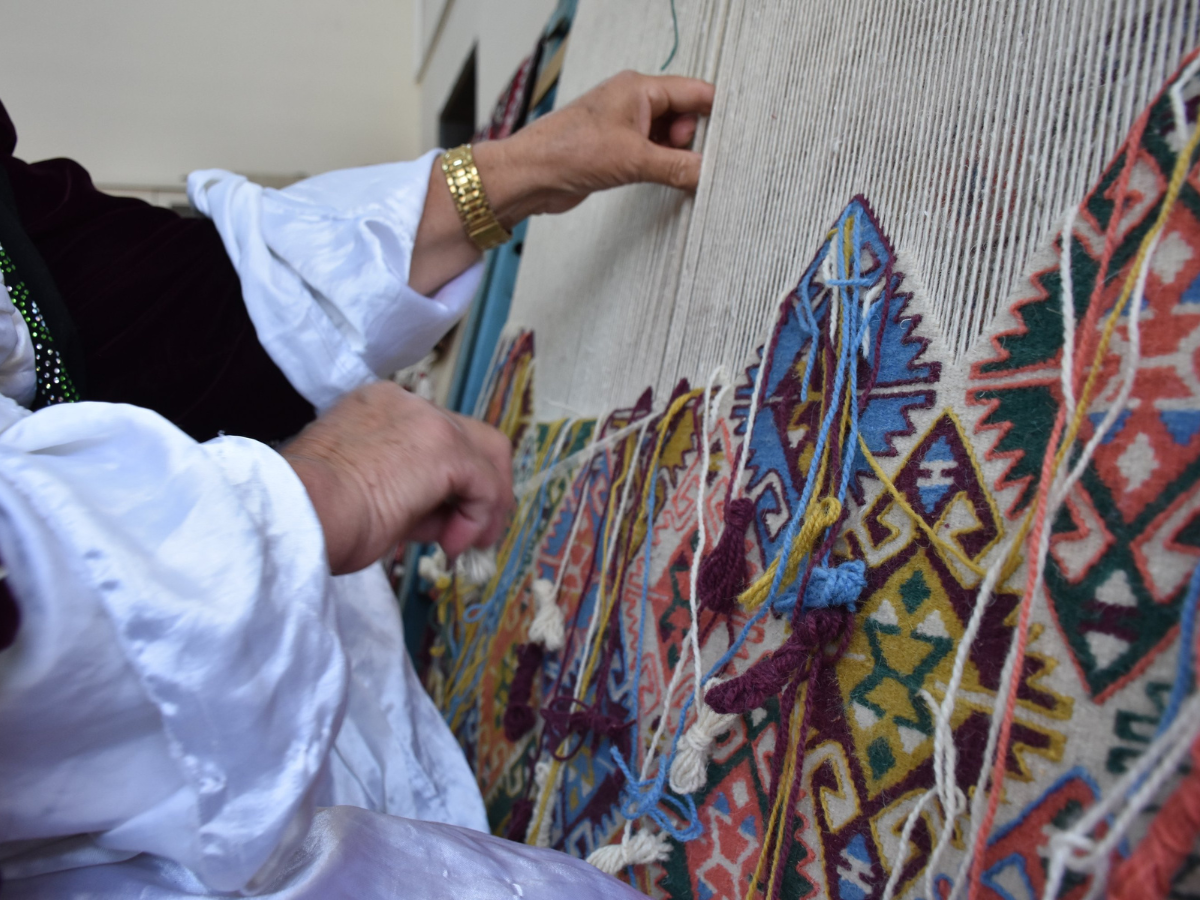Currently Empty: $0.00
Kilim rugs are more than just floor coverings; they are pieces of art that tell stories of culture, tradition, and craftsmanship. But have you ever wondered how are kilim rugs made? These beautiful flatweave rugs are created meticulously and combine skill, patience, and natural materials.
In this blog, we’ll take you through the fascinating journey of transforming raw wool into a stunning kilim rug.
The Beginning of Kilims
Kilim rugs have a rich history that dates back thousands of years. Originating from regions like Turkey, Iran, and the Balkans, these rugs were traditionally made by nomadic tribes. They served both functional and decorative purposes, often symbolizing the weaver’s identity, beliefs, or environment. Today, kilim rugs are cherished worldwide for their vibrant patterns and durability.
How Are Kilim Rugs Made?
The process of making kilim rugs is a blend of artistry and tradition. Here’s a step-by-step breakdown of how these timeless pieces come to life:
1. Shearing and Preparing the Wool
The journey begins with shearing wool from sheep. This wool is then cleaned, carded, and spun into yarn. Natural dyes, derived from plants, minerals, and insects, are used to color the yarn. Additionally, these dyes are eco-friendly and create the rich, earthy tones that kilim rugs are known for.
2. Designing the Pattern
Before weaving begins, the design is carefully planned. Kilim patterns are often geometric and symbolic, reflecting the weaver’s heritage. Moreover, each motif carries meaning, such as protection, fertility, or prosperity.
3. Setting Up the Loom
The loom is the backbone of kilim weaving. It consists of vertical threads called the warp and horizontal threads called the weft. The warp is stretched tightly on the loom, providing the foundation for the rug.
4. Weaving the Rug
This is where the magic happens. The weaver interlaces the colored weft threads through the warp, creating the rug’s pattern. Unlike other rugs, kilims are flatweaves, meaning they have no pile. This technique makes them lightweight and reversible. Furthermore, the process is entirely manual, requiring immense skill and precision.
5. Finishing Touches
Once the weaving is complete, the rug is removed from the loom. The edges are secured, and any loose threads are trimmed. Finally, the rug is washed and dried, enhancing its colors and texture.
Why are Kilim Rugs So Expensive?
Kilim rugs are expensive because they are made entirely by hand, which takes a lot of time and skill. Artisans use high-quality wool and natural dyes to create unique, intricate designs. Since each rug is one-of-a-kind and lasts for decades, you’re paying for both craftsmanship and durability. In short, you’re buying a piece of art and tradition, not just a rug.
Caring for Your Kilim Rug
To keep your kilim rug looking its best, regular care is essential. Vacuum it gently to remove dust, and rotate it occasionally to prevent uneven wear. Additionally, avoid placing it in direct sunlight to prevent fading. If spills occur, blot them immediately with a clean cloth.
Also Read: Rug Cleaning 101!!!
Conclusion
Understanding how are kilim rugs made gives us a deeper appreciation for these beautiful creations. From the shearing of wool to the final weave, every step is a testament to the skill and dedication of the artisans. Whether you’re decorating your home or preserving a piece of history, a kilim rug is a timeless addition. So, the next time you see one, you’ll know the incredible journey it took to become the masterpiece it is.
By exploring how are kilim rugs made, we not only celebrate their beauty but also honor the traditions that keep this ancient craft alive.




